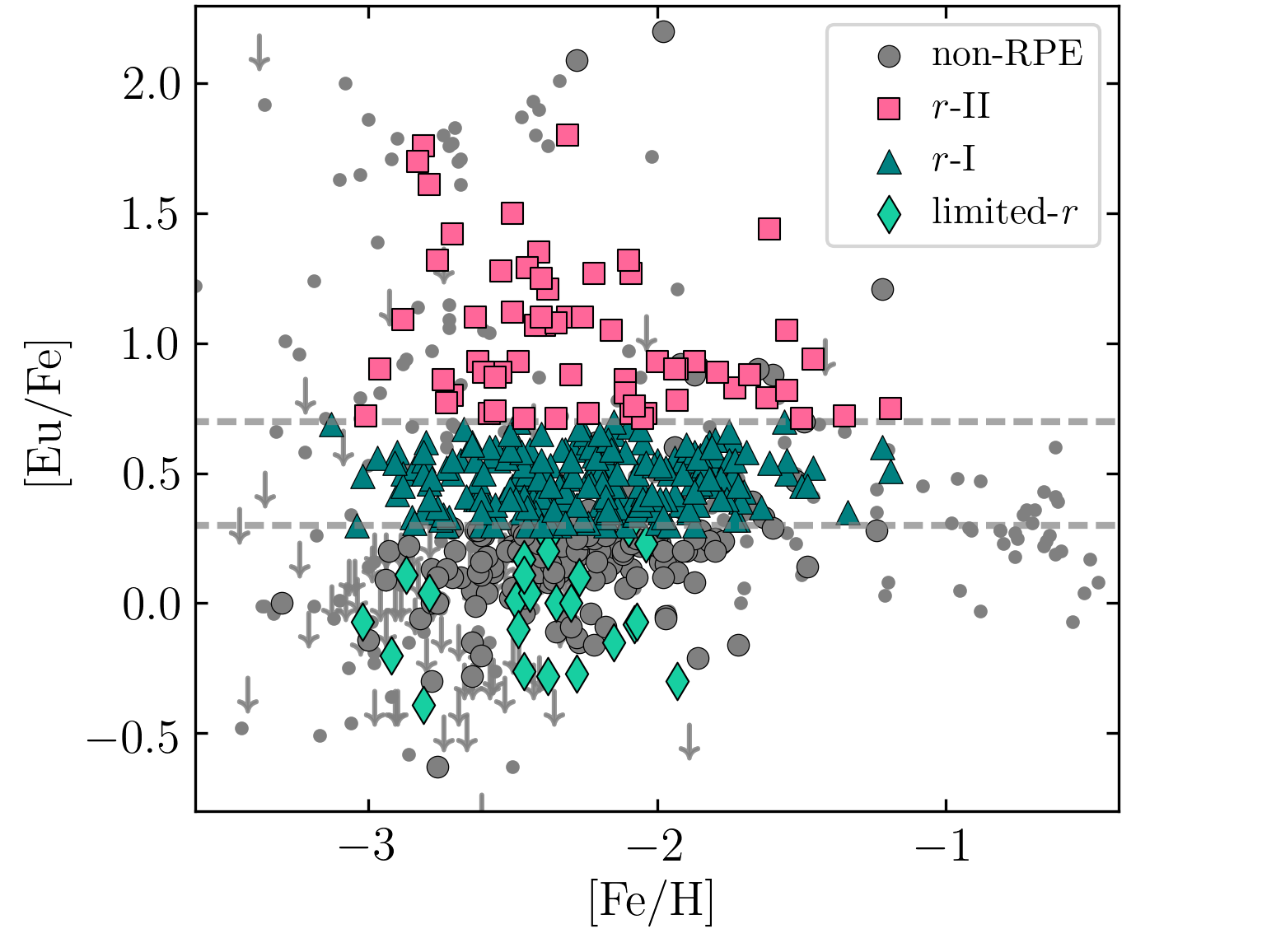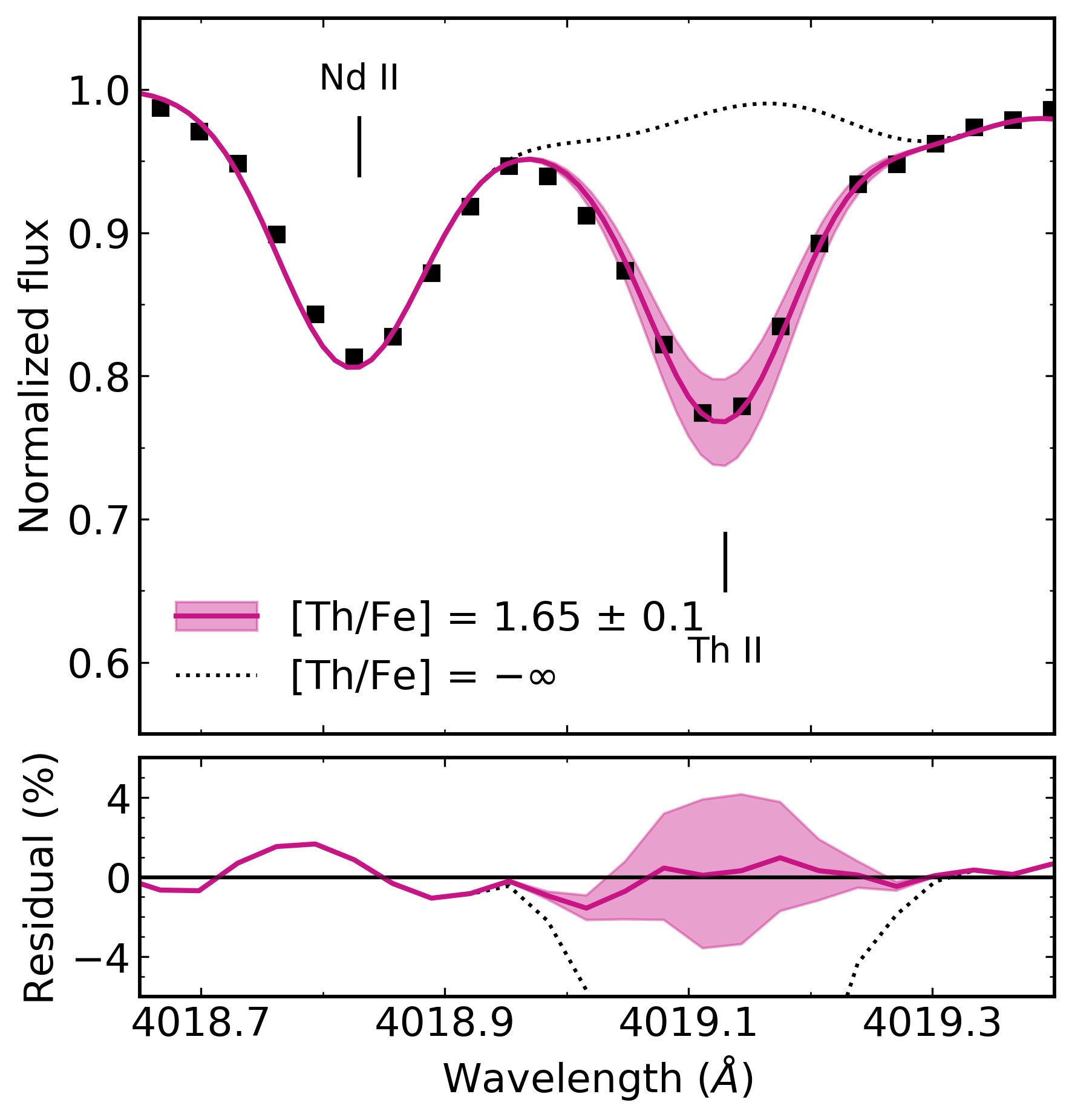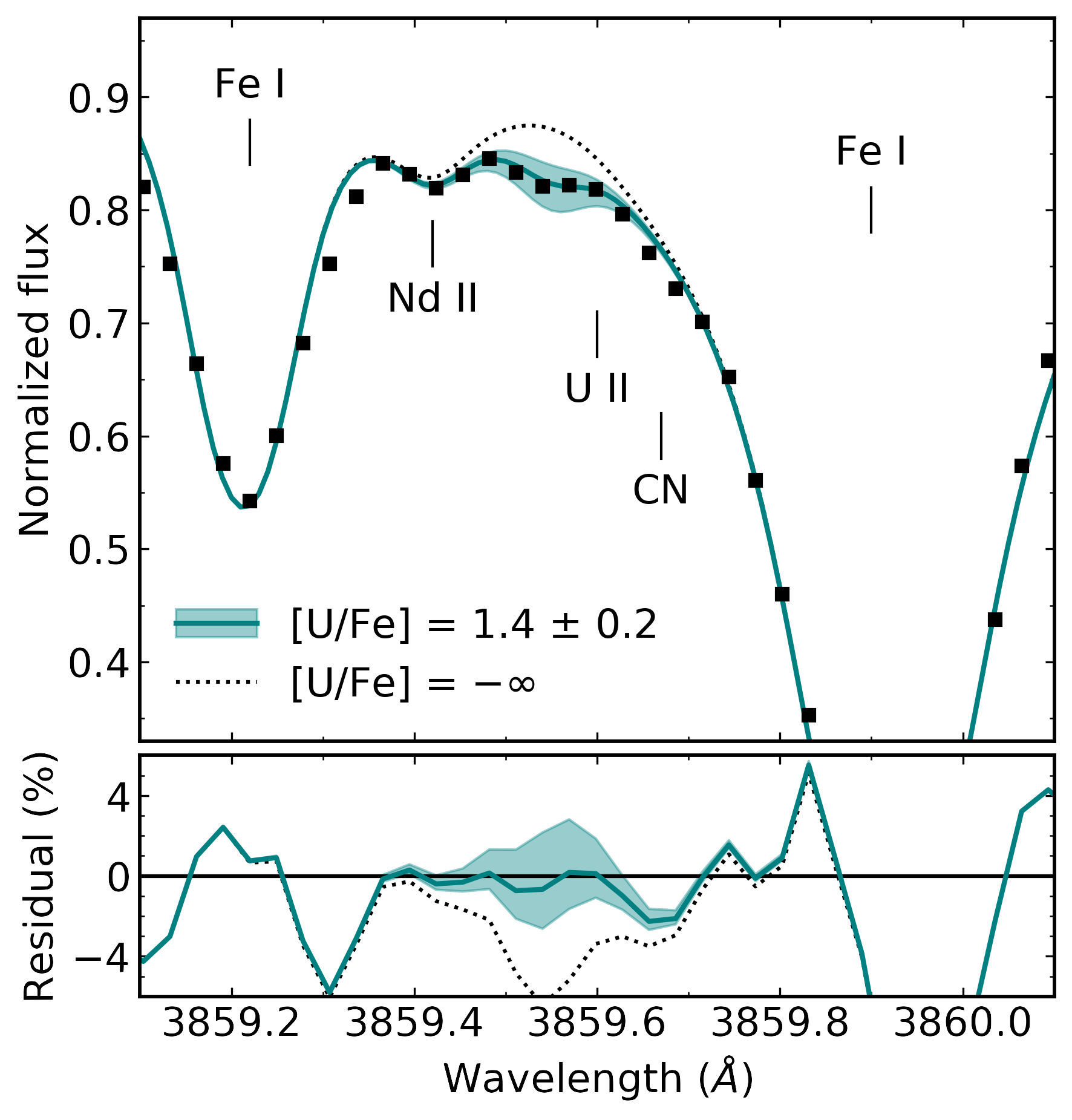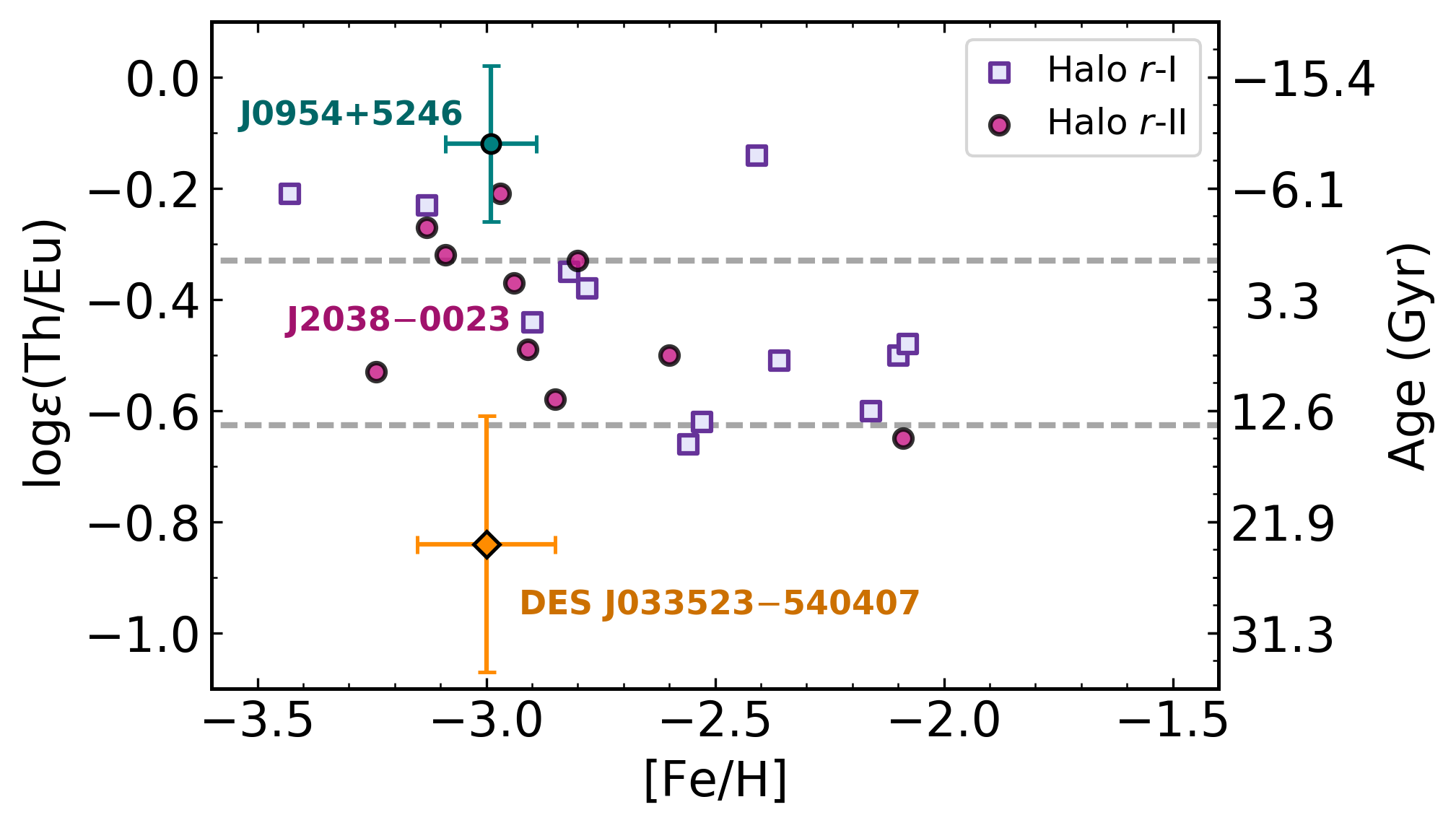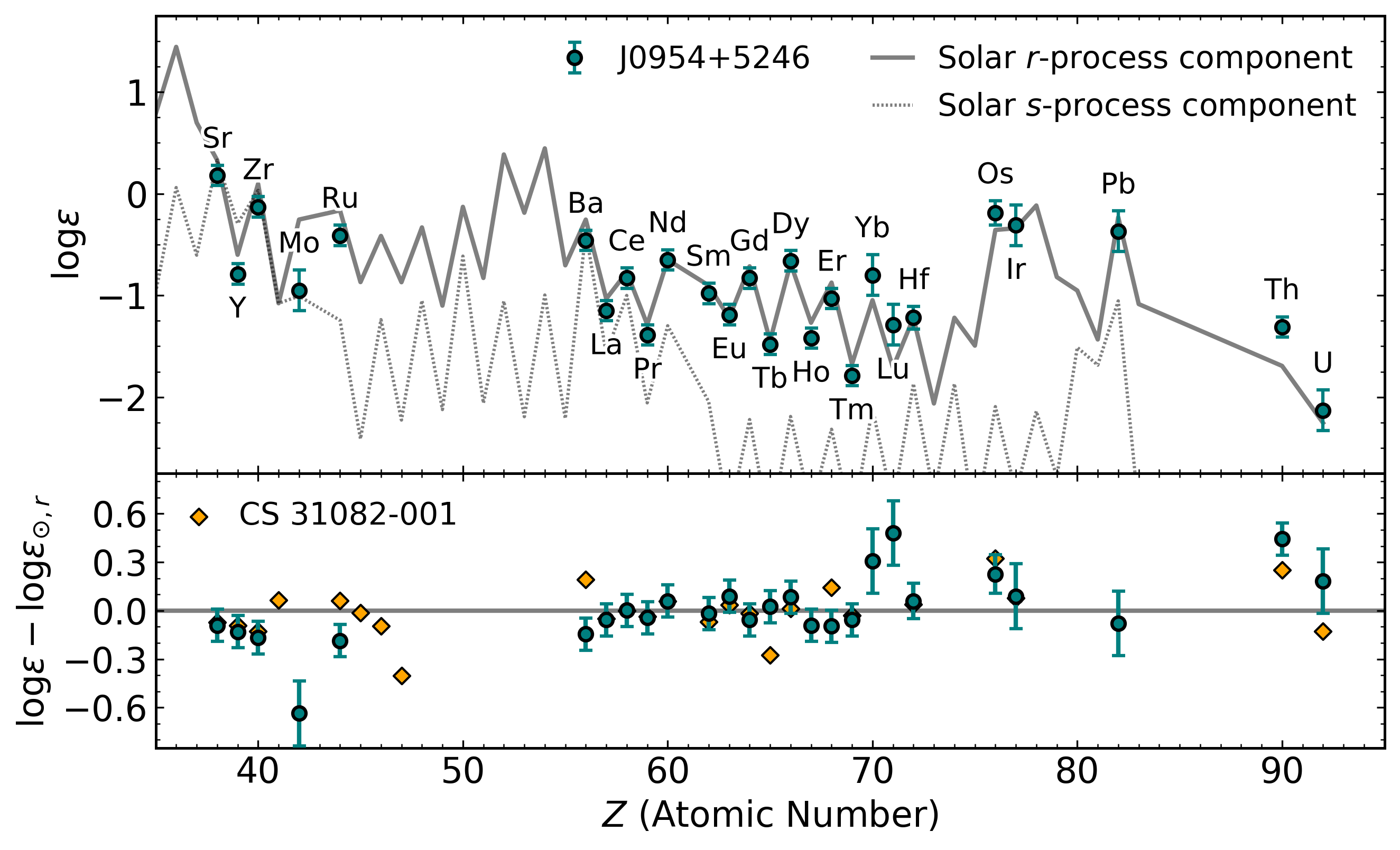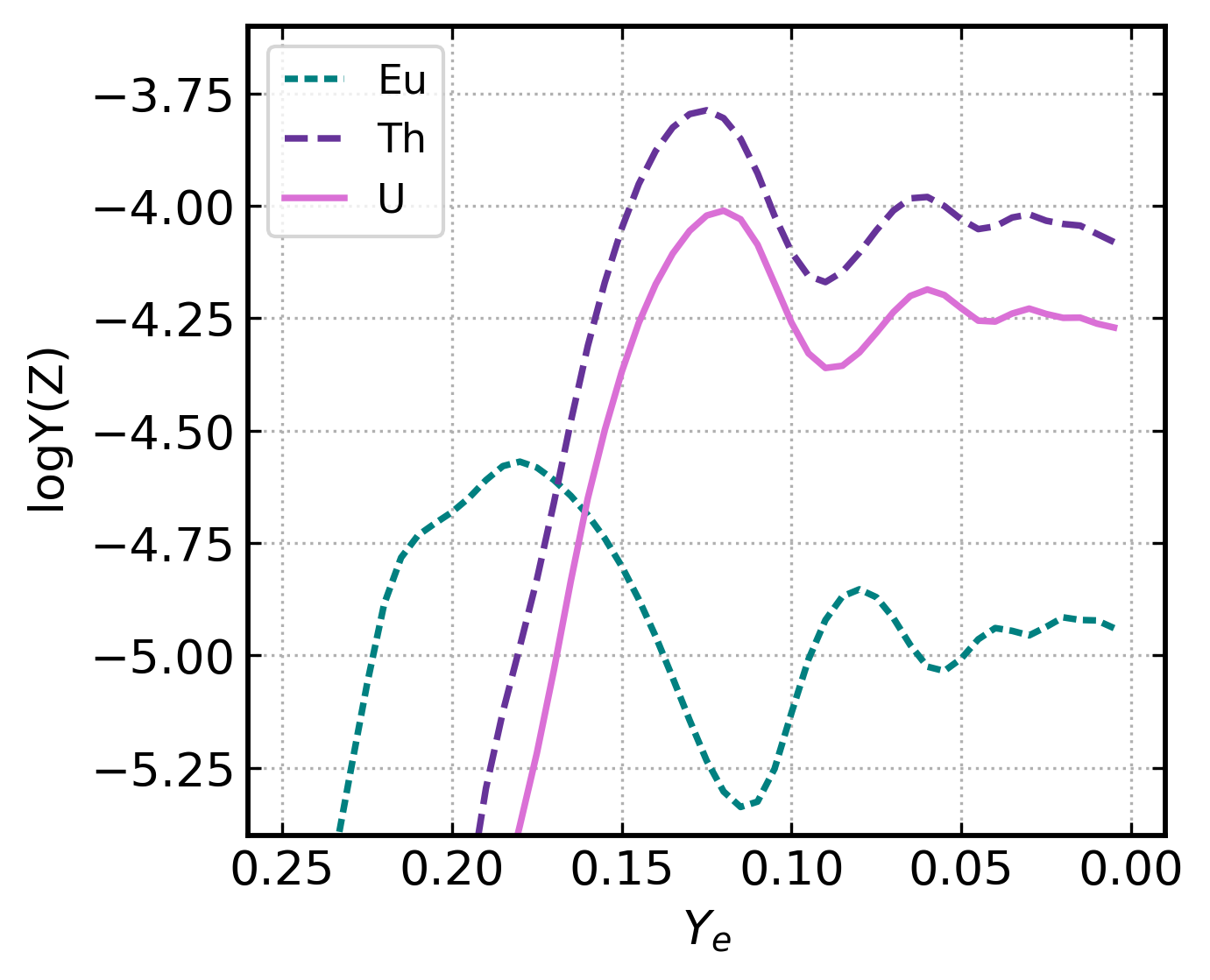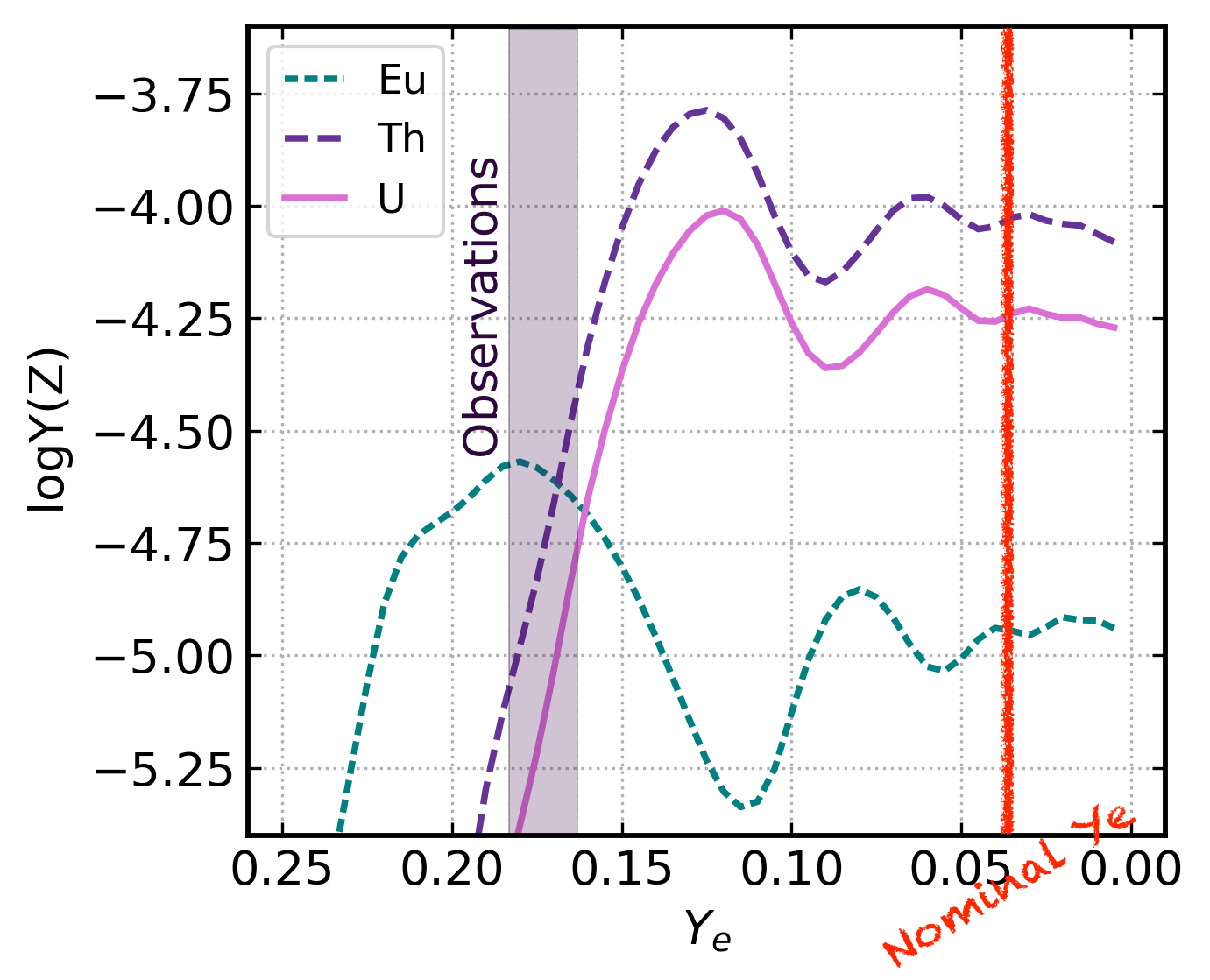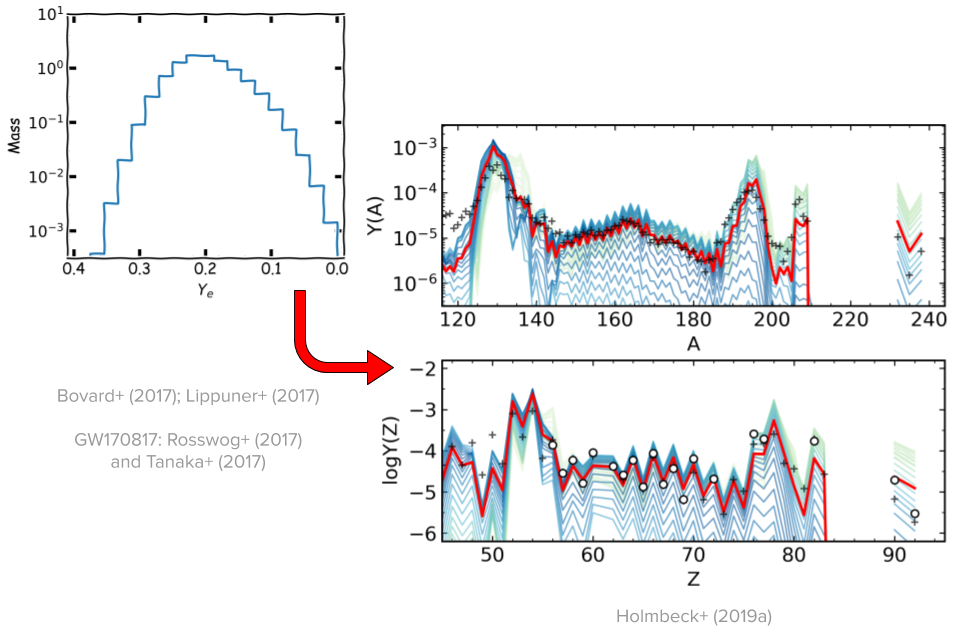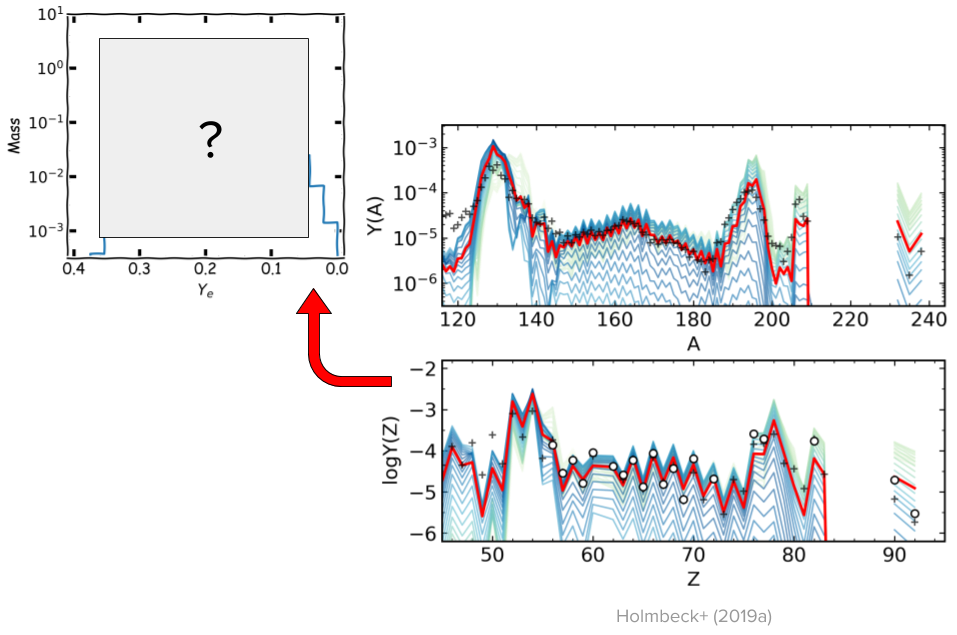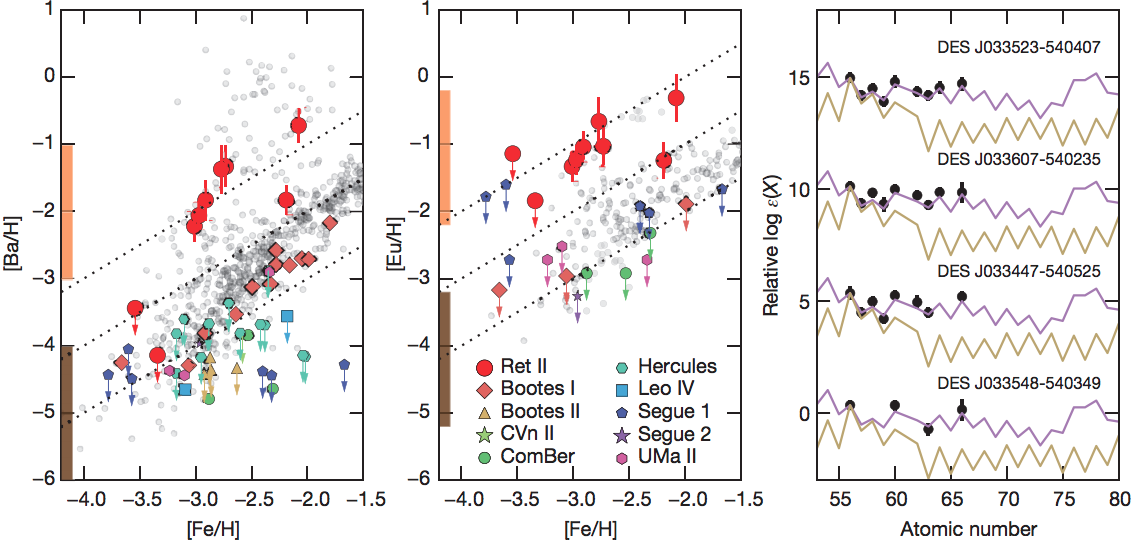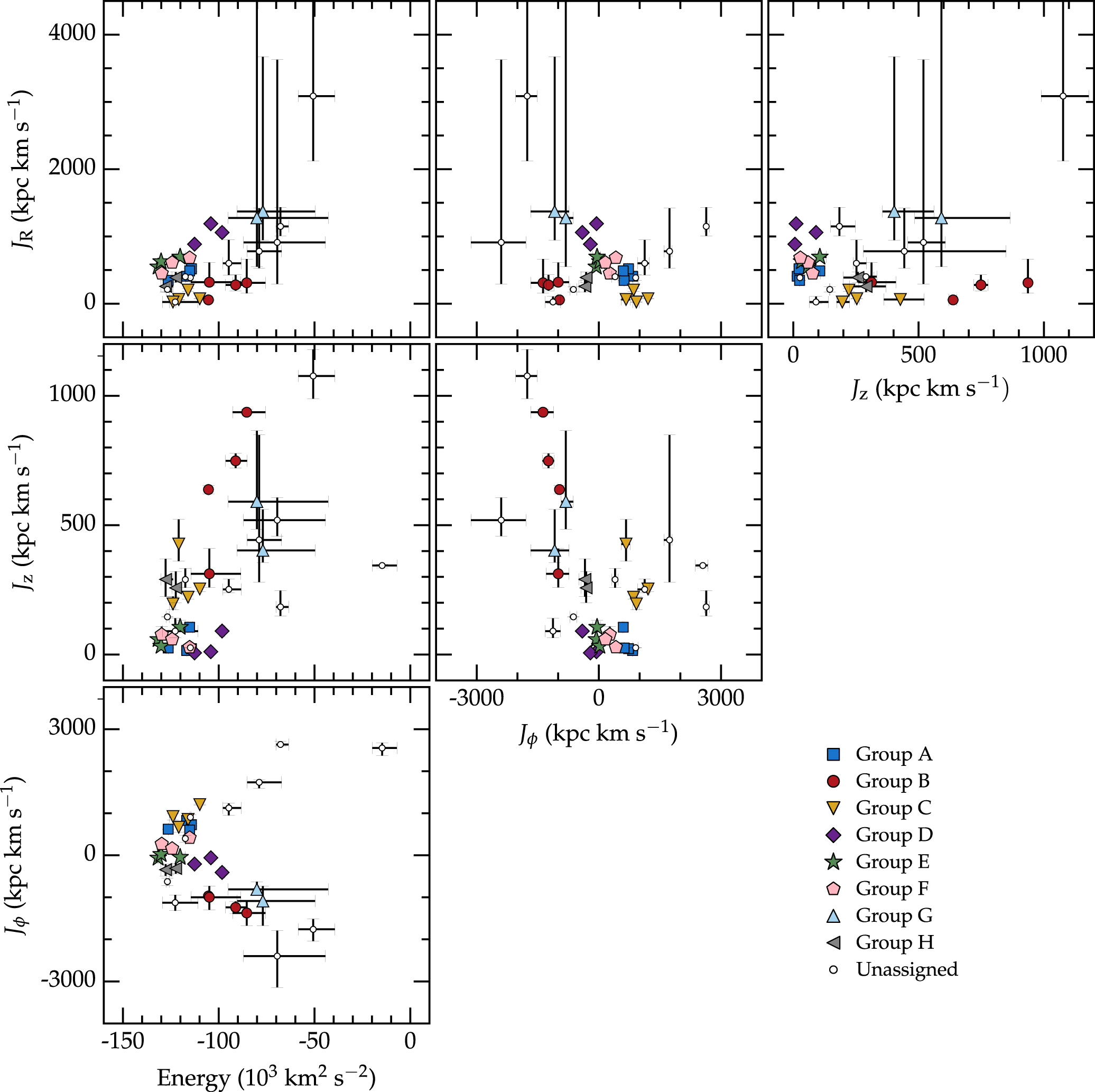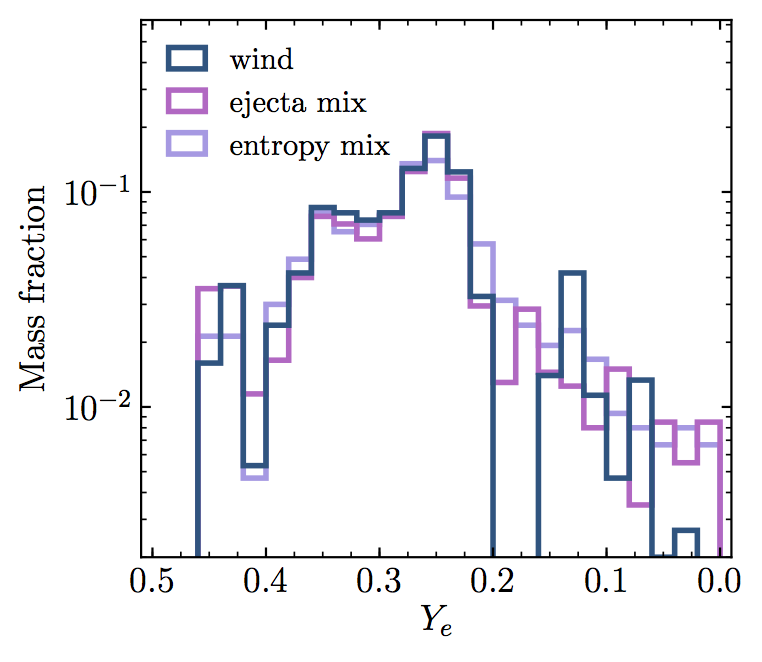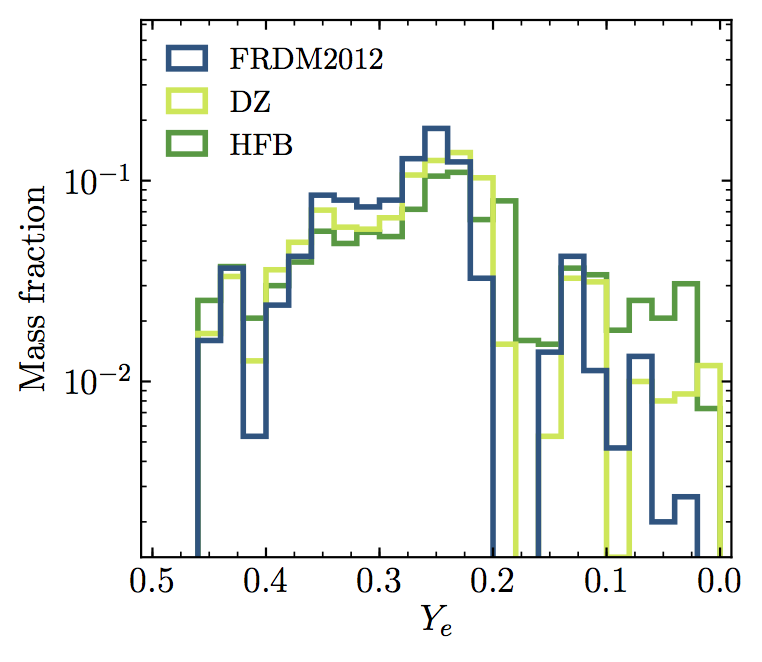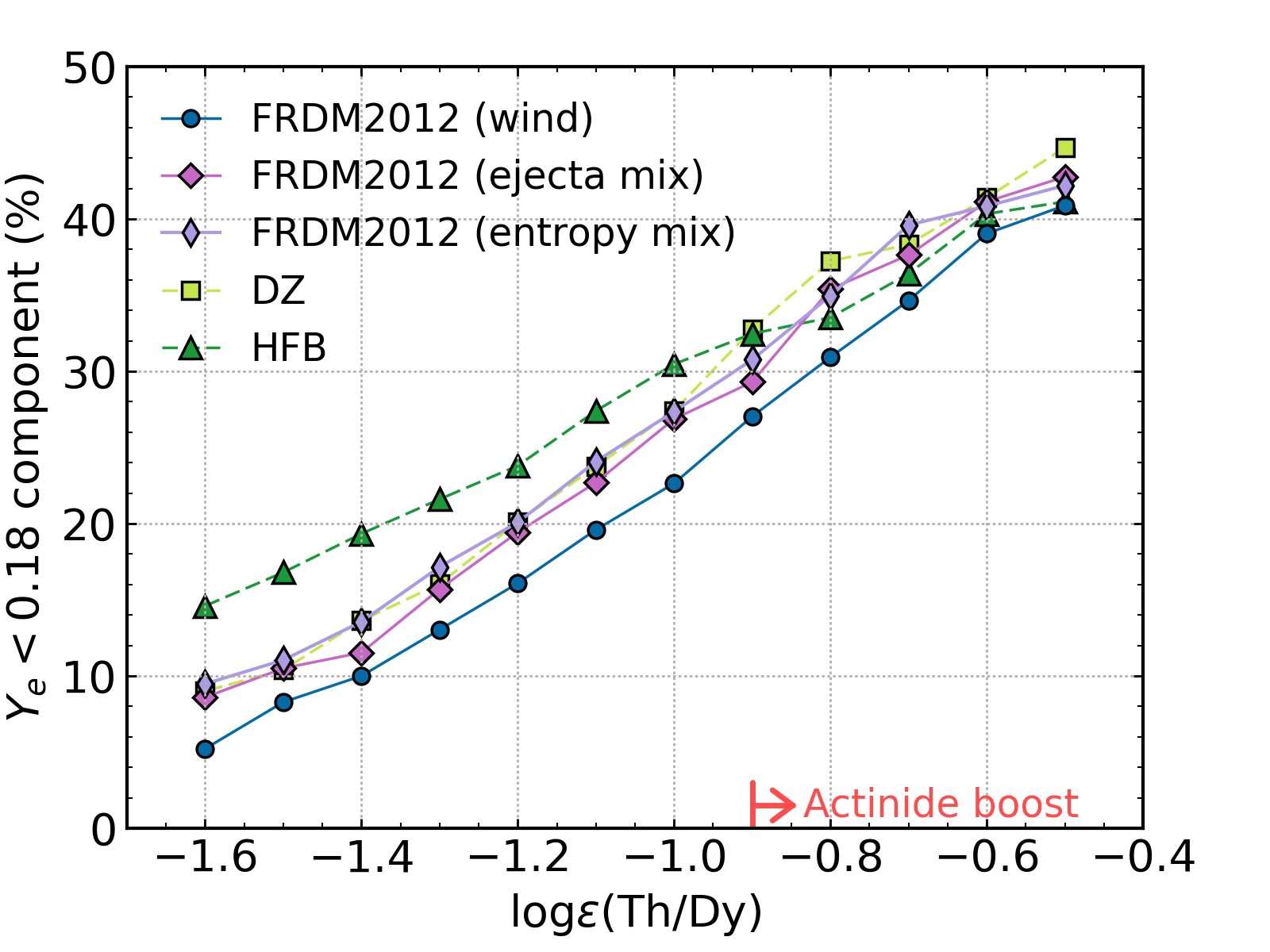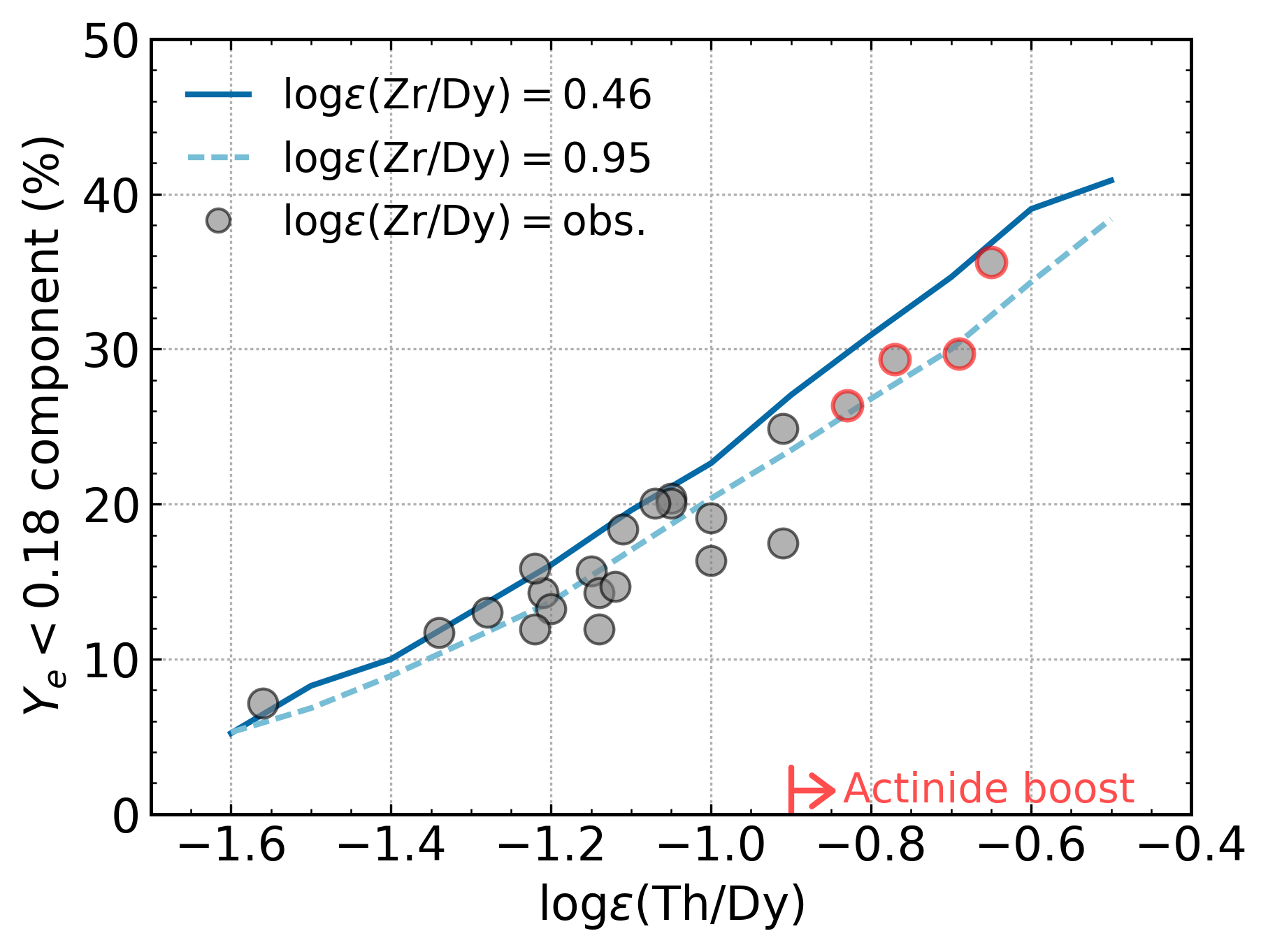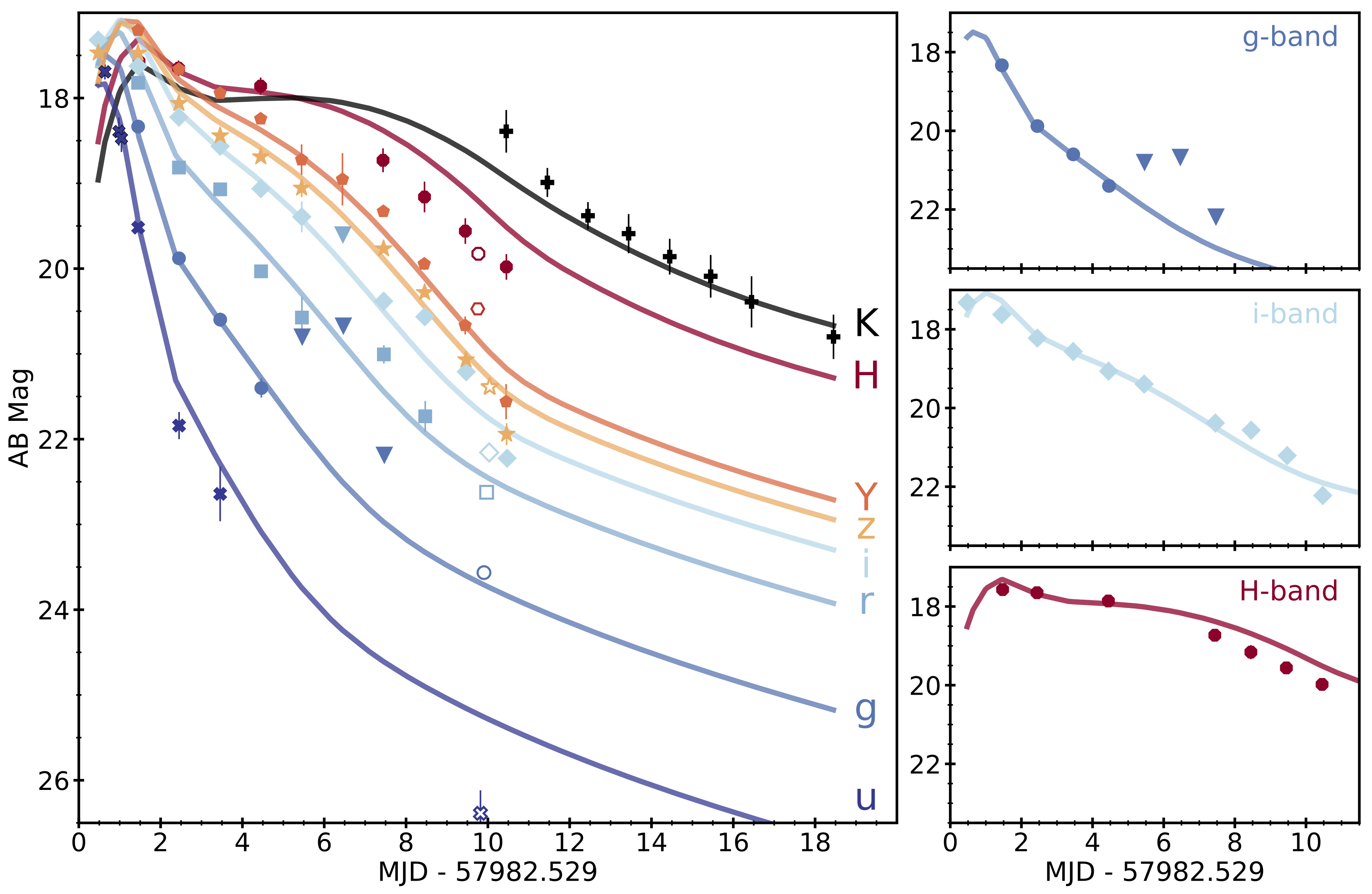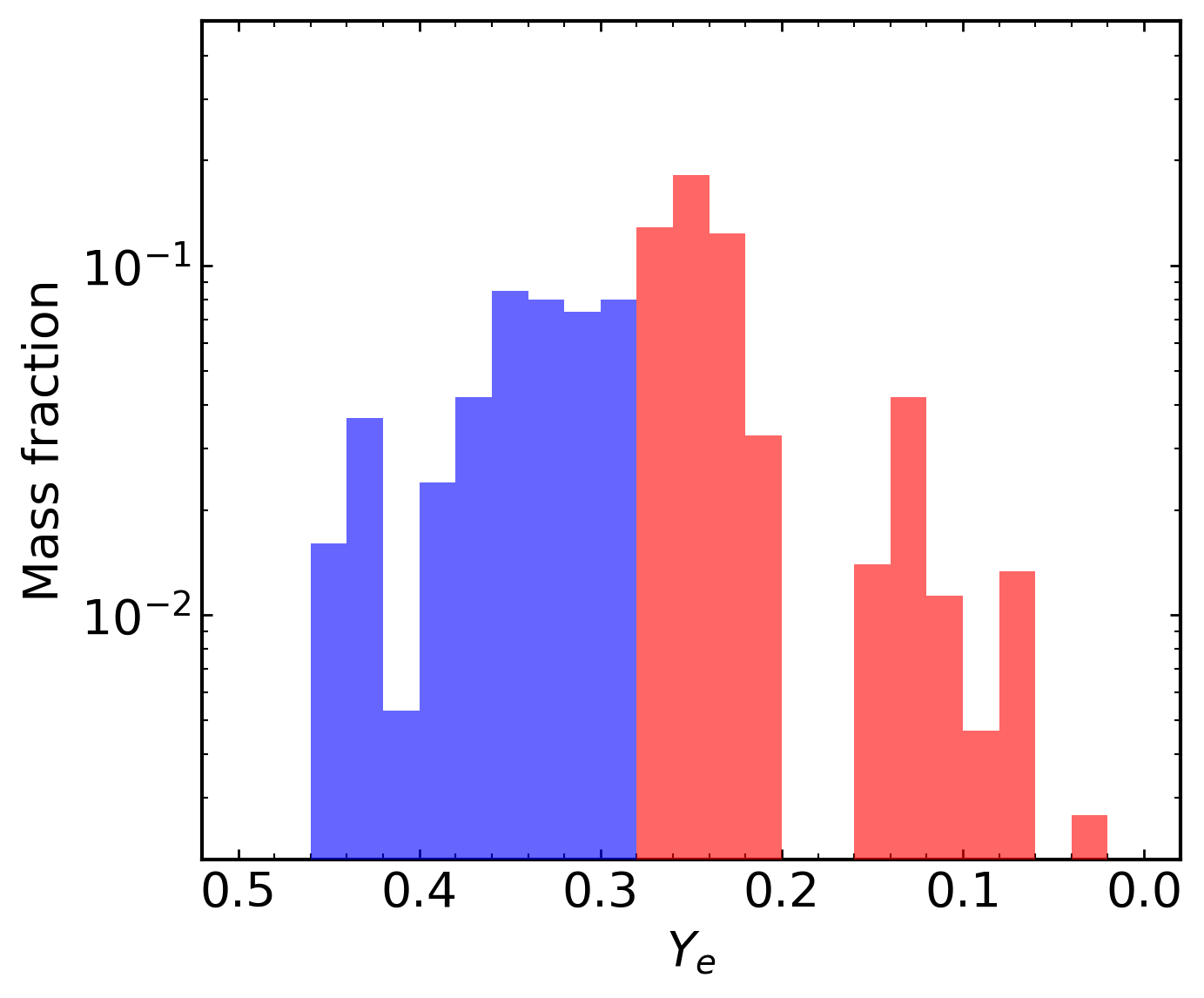Constraining the r -Process with eholmbeck.github.io/talks.html
Good morning everyone, and thank you to Anna and Rana for the invitation and for organizing this meeting.
Today I will introduce a little bit of work from the theory side about what we can do with
r-process enhanced stars.
A lot of this work was done in collaboration between Gail, Anna, and Rebecca---who are all here---
about actinides in metal-poor stars and their implication for r-process nucleosynthesis
The Origin of the Elements
from data in Sneden+ (2008)
Of course we're all here to discuss the origin of the elements, specifically by the rapid-neutron capture process.
The r -process
As a reminder for those who aren't used to seeing r-process movies, in an r-process, the
system stars with some seed distribution of nuclei. Then, in neutron-rich conditions,
these nuclei capture neutrons and become heavier elements through a combination of beta-decays
and photodissociations. At the very top of the chart of nuclides, the material may fission.
It's not that our network stops here; these nuclei we predict to fission, then the fragments
that that nucleus breaks into can themselves participate in the r-process.
When the neutron flux falls off, the network drops out of (n,g)-(g,n) equilibrium,
and this time is known as freezeout. After freezeout, the nuclei *pretty much* decay back
towards the Valley of Nuclear Stability in a series of beta-decays, alpha-decays, or fission.
The (Solar) r -Process Pattern
Hotokezaka+ (2018)
In the Solar System, the isotopic abundances can be split into how much came from an
r-process. Just as a reminder, when we talk about the peaks, they refer to the abundance peaks
at A~80, ~130, and ~190. The "lanthanides" might be interchangeably referred to as "rare earth"
elements, and my favorite are the actinides---Th and U, the heaviest observable elements---
which are in that row below the lanthanides on the periodic table.
What is the site of the r -Process?
So we have a pretty good understanding of the nuclear physics involved in these processes,
but of course, we still don't exactly know where the r-process can occur astrophysically.
Core-collapse supernovae? NASA / JPL-Caltech
Today, CCSNe are not supported by modern simulations as main r-process sources,
but may still be responsible for the limited-r pattern.
Exotic supernovae? NASA / SkyWork Digital
see talk by D. Siegel
Exotic types of supernovae like MHD-jet SNe are possibly an option, and Dan will
talk about collapsars tomorrow.
Neutron Star Mergers
Daniel Price (U/Exeter) and Stephan Rosswog (Int. U/Bremen)
see talk by O. Korobkin
Instead, the current favorite sites are NSMs, even more so after the gravitational wave event in 2017.
Neutron Star Mergers: GW170817
see talk by S. Vitale
How (else) can we study the r -process observationally?
Chemically-enhanced stars
But we only have one "confirmed" r-process site.
In order to study these possible sites observationally, we need a pure signature of the r-process event.
r -II StarsMcWilliam+ (1995), Sneden+ (2003)
R-II stars are perfect for this since they are essentially records of nearly pure r-process events.
The r-II stars have an elemental pattern that nearly duplicates what we observe in the Solar System.
And on top of that, compared to their iron content, these stars have more than 10 times as much r-process material as the Solar System.
The abundance patterns of r-process enhanced stars like this looks exactly like what we expect an r-process pattern to look like in our Solar System.
**The important difference is that these stars are much older than the Solar System, by about 7 billion years.**
r -Process Enhanced Stars are Rarefrom data in Abohalima & Frebel (2018)
Metal-poor stars are already very rare in the MW, and fewer than 5% of those rare stars are r-II stars.
If we want to study the r-process observationally and be able to distinguish between r-processs sites,
we need more stars that display this r-process signature. So what are we doing about it?
est. 2017 Snapshot high-resolution data obtained for 1767 (of target 2500) stars
Published 225 (325 in prep.)
Identified over 25 new r -II stars (of ~600 analyzed)
Magellan Telescopes, Las Campanas Observatory, Chile
see talks by T. Beers and C. Sakari
As you probably know by now, The R-Process Alliance was established a couple of years ago,
with one main goal to identify more of these r-II stars. A soft goal is to quadruple the
number of known r-II stars from about 25 to 100.
Through this huge undertaking, the R-Process Alliance has already observed over 1700 metal-poor stars.
Over 500 of those are either published or ready to be published.
We expect about 3 to 5 percent of metal-poor stars to be r-II stars,
so it's necessary to observe such a large number of metal-poor stars to get to our goal of 75.
Of those 500, we have already identified over 30 new r-II stars.
High-Resolution Spectroscopy
Hansen, Holmbeck+ (2018)
How we identify these r-II stars is through high-resolution spectroscopy.
The r-process signatures we look for do not appear with lower-resolution spectra, so we need to take high-resolution.
It takes about 30 minutes on a 2.5-meter telescope to obtain each of these spectra.
We look for mainly three elements to characterize the stars we observe: Strontium, Barium, and Europium.
Then we use the relative abundances of these elements to classify whether the stars are r-process enhanced.
In particular, we use Europium to classify r-II stars since Europium is mainly produced by the r-process.
Notice this r-II star has a very strong Europium feature, but these other two stars are not as enhanced in r-process elements.
We do this for each star in our sample in order to produce plots like these [NEXT SLIDE].
Doubled Number of Known r -II Stars
from RPA data (2017-2019)
This is what the RPA has been able to accomplish over the last couple years, so far.
This is that 550 that have been analyzed.
We've identified many more r-II stars and a lot of r-I stars, which are
moderately-enhanced with r-process material. Our goal is to get 100 in this upper part.
New Separation at [Eu/Fe] = 0.7?
Holmbeck+ (in prep.)
With all this new data, one thing we can ask is whether our definition of
"r-I" and "r-II" make sense anymore. For example, maybe defining "r-II" as
[Eu/Fe] > 0.7 is more physical?
Actinides in r -II Stars
Placco, Holmbeck+ (2017), Holmbeck+ (2018)
In some stars, we observe the entire range of r-process elements.
And sometimes, we can measure the actinides, Th and U.
Here is an example of a Th measurement and a U measurement in two different r-II stars.
Thorium in Metal-Poor Stars
Th/Eu r -process enhanced stars
Holmbeck+ (2018)
For stars that show the entire r-process pattern, there is a variation from star to star in the actinide-to-lanthanide ratio.
For example, some are enhanced in thorium, these actinide-boost stars.
And at least one is very deficient in actinides.
But most r-proces enhanced stars have a relative thorium abundance that approximately agrees with the Solar value and a cosmochronometric age gives a reasonable value for those stars.
The Actinide Boost
Holmbeck+ (2018)
Now, what is the actinide-boost? It is an r-process-enhanced star that shows an extra enhancement of the actinides. The rest of the r-process pattern looks like every other r-II star, and the actinide abundances are much greater than what's in the Solar System. Compared to this canonical actinide-boost star, CS 31082-001, it is even more enhanced than that star.
What is the source of this actinide-boost?
Actinide Production and Ye
The electron fraction, Ye, r -process event
Ye = [1+(n/p)]-1
To investigate this, we studied the affect of initial electron fraction on the final r-process abundances.
In an astrophysical r-process event, the initial electron fraction---or Ye---is one parameter that sensitively affects the final r-process abundances that are produced.
For those a but rusty on this notation, a lower Ye means more neutron-rich, and higher Ye is more proton-rich
and essentially sets the initial amount of neutrons that are available to participate in neutron-capture.
[MOVIE] With all else being equal, in certain situations, starting at a somewhat low Ye may produce just the second r-process peak---elements like Barium and Tellurium.
Decreasing the initial Ye produces the lanthanides, but not necessarily the third peak.
Further decreasing the initial Ye can eventually produce actinides in the final abundance pattern.
Then, as the initial material gets more and more neutron-rich, the actinides oscillate. We see this explicitly in [NEXT]
Actinide Production and Ye
narrow Ye range
Holmbeck+ (2019a)
see talk by M. Eichler
...this plot, which shows the final actinide and Eu abundance as a function of decreasing Ye.
We explored if this variation could explain the actinide variations we observe in stars.
In order to reproduce the observations, the ejecta is only allowed to be within an very narrow window of Ye.
It is much more likely to have a distribution of ejecta.
So instead of picking one Ye, we chose a combination.
Actinide Production and Ye
narrow Ye range
Holmbeck+ (2019a)
see talk by M. Eichler
...this plot, which shows the final actinide and Eu abundance as a function of decreasing Ye.
We explored if this variation could explain the actinide variations we observe in stars.
In order to reproduce the observations, the ejecta is only allowed to be within an very narrow window of Ye.
As Xilu mentioned in the previous talk, it is much more likely to have a distribution of ejecta.
So instead of picking one Ye, we chose a combination.
Actinide Boost Stars
combination e
Instead of picking one very low Ye, we chose a combination that was motivated by literature and observations of the GW170817 kilonova.
This combination of Ye---in red here---does much better matching to actinide-boost abundances than any single Ye---in blue.
Can we make a more general argument? [NEXT]
Going backwards
Can we instead go backwards and describe a Ye combination from the stellar abundances themselves...
And therefore build a distribution that characterizes the r-process event needed in order to reproduce those abundances.
Reticulum II
Ji+ (2016) A. Ji; Dark Energy Survey/Fermilab
Where do we find these stars? We find them here in the Milky Way, and we also see them in other galaxies.
This is an image of the ultra-faint dwarf galaxy Reticulum II against some foreground stars.
A couple studied measured the elemental abundances of these stars in red in Ret II, and found that most of these stars
were extremely enriched with r-process elements.
What does this mean? Since this galaxy is so small, it mean that likely a very strong r-process event occurred
and enriched this galaxy, so it is likely that all the r-process material in this galaxy was made by one prolific event.
Further, the authors of this paper argue that a NSM occurred in this galaxy in order to produce all these elements.
Enhanced stars are kinematically related
Roederer+ (2018)
Where do we find these stars? We find them here in the Milky Way, and we also see them in other galaxies.
This is an image of the ultra-faint dwarf galaxy Reticulum II against some foreground stars.
A couple studied measured the elemental abundances of these stars in red in Ret II, and found that most of these stars
were extremely enriched with r-process elements.
What does this mean? Since this galaxy is so small, it mean that likely a very strong r-process event occurred
and enriched this galaxy, so it is likely that all the r-process material in this galaxy was made by one prolific event.
Further, the authors of this paper argue that a NSM occurred in this galaxy in order to produce all these elements.
Galactic halo stars may be relicts of
r -process source(s)
Where do we find these stars? We find them here in the Milky Way, and we also see them in other galaxies.
This is an image of the ultra-faint dwarf galaxy Reticulum II against some foreground stars.
A couple studied measured the elemental abundances of these stars in red in Ret II, and found that most of these stars
were extremely enriched with r-process elements.
What does this mean? Since this galaxy is so small, it mean that likely a very strong r-process event occurred
and enriched this galaxy, so it is likely that all the r-process material in this galaxy was made by one prolific event.
Further, the authors of this paper argue that a NSM occurred in this galaxy in order to produce all these elements.
Actinide Variation among Groups
hint to key r -process characteristics
Holmbeck+ (2019b)
Since the actinides are only made by the r-proces, these differences in the relative actinide abundances clue us into certain r-process conditions, or point to different r-proces sites entirely, that are responsible for producing the actinides.
Actinide-Dilution with Matching Model
empirical e (0.005-0.450)
To explain entire pattern using Zr Dy Th only
So we built a model to do this that uses a Monte Carlo method.
First, we ran about one hundred r-process nucleosynthesis simulations using PRISM
starting at different Ye's, each of which produces a distinct final abundance pattern.
Then, we give the model constraints using three elements.
[PLAY]
The model randomly picks a number of initial Ye's, then adds together the final abundance patterns.
If the summed abundance pattern agrees with the input abundances, then we keep that randomly-chosen set of Ye's and add them to this distribution on the left.
This is the orange line in this movie. We run this hundred of thousands of times until this distribution converges.
In the end, this distribution shows how the ejecta of an r-process event could have been distributed in Ye
in order to produce the input stellar abundances on the right.
ADM
The low-Ye component
No discrete difference
Holmbeck+ (2019b)
see talks by H. Schatz and F. Montes
We can quantify the contribution from the very-low Ye component.
This plot is a little complicated. Basically, we ran a series of these simulations where we varied the required actinide contribution systematically,
and this axis shows what percentage of the total ejected mass is allowed to be in that low-Ye tail.
The gray dots show what the low-Ye contribution would be for individual stars after running this model.
Notice a few things. First, the low-Ye contribution that we get from the ADM results varies smoothly from actinide-poor to actinide-boost.
Secondly, the actinide-boost stars are just at the tail of an otherwise normal/Gaussian distribution.
To explain the majority of the range of actinide abundances, the low-Ye ejecta need only be between 10 and 30% of the total ejected mass,
which isn't too significance of a difference.
So what does this imply?
Holmbeck+ (2019b)
Actinide-boost stars do not necessarily callr -process progenitor
This could mean that stars showing the extra enhancement of actinides could be made by the same r-process site as the actinide-deficient case.
For example, this is accommodated in a NSM model by different amounts of dynamical ejecta where very robust actinide production may occur.
[NEXT] Well, we have observations of one NSM event, so we can compare our distribution to observations to test if they agree with a NSM.
GW170817 lightcurve
blue ejecta + Lanthanide-rich red ejecta
Cowperthwaite+ (2017)
In addition to gravitational waves, GW170817 released electromagnetic radiation.
To explain the lightcurve from this event, many studies have argued that there must have been at least two components of the NSM ejecta:
a lanthanide-poor blue component, and a lanthanide-rich red component.
So we can do the same thing with our distribution to test if it matches with this observation.
Two ejecta components
Stellar Abundances
X lan = 10-3.8 X lan = 10-0.8 m red / m blue = 1.7
GW170817
X lan = 10-4 X lan = 10-1.5 m red / m blue = 1.6
Inspired by this red and blue component model, we split our mass distributions into red and blue components,
and calculated the lanthanide mass fractions and the mass ratio between them.
And we get numbers.
We compare that to the same numbers from an independent study of GW170817.
It's amazing that they are so similar considering we built these distribution from spectroscopic observations of r-process enhanced stars,
and the numbers from the kilonova are from an entirely different kind of observation.
This is what we come up with just from stellar abundances---three elemental abundances in particular.
It's still possible that our results from the r-process enhanced stars could be from a different r-process site,
but these results are surprisingly similar considering our vastly different approaches.
Results derived from r -enhanced stars are
r -enhanced stars?
What we derived from observations of stars is similar to results derived from a NSM observation.
This could suggest that the r-process enhanced stars like Ret II were indeed enriched by a NSM event.
It does not need to be a NSM merger. For example, a collapsar could yield similar results.
Special Thanks
Timothy C. Beers (ND), Nicole Vassh (ND), Terese T. Hansen (TAMU), Chris Sneden (UT-Austin)

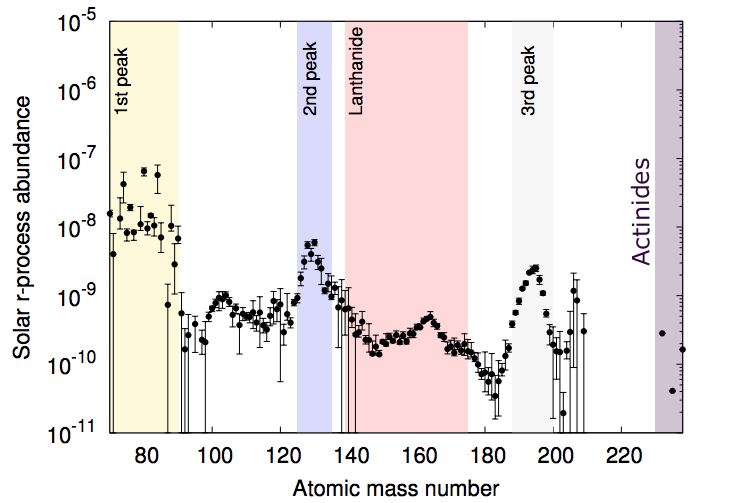
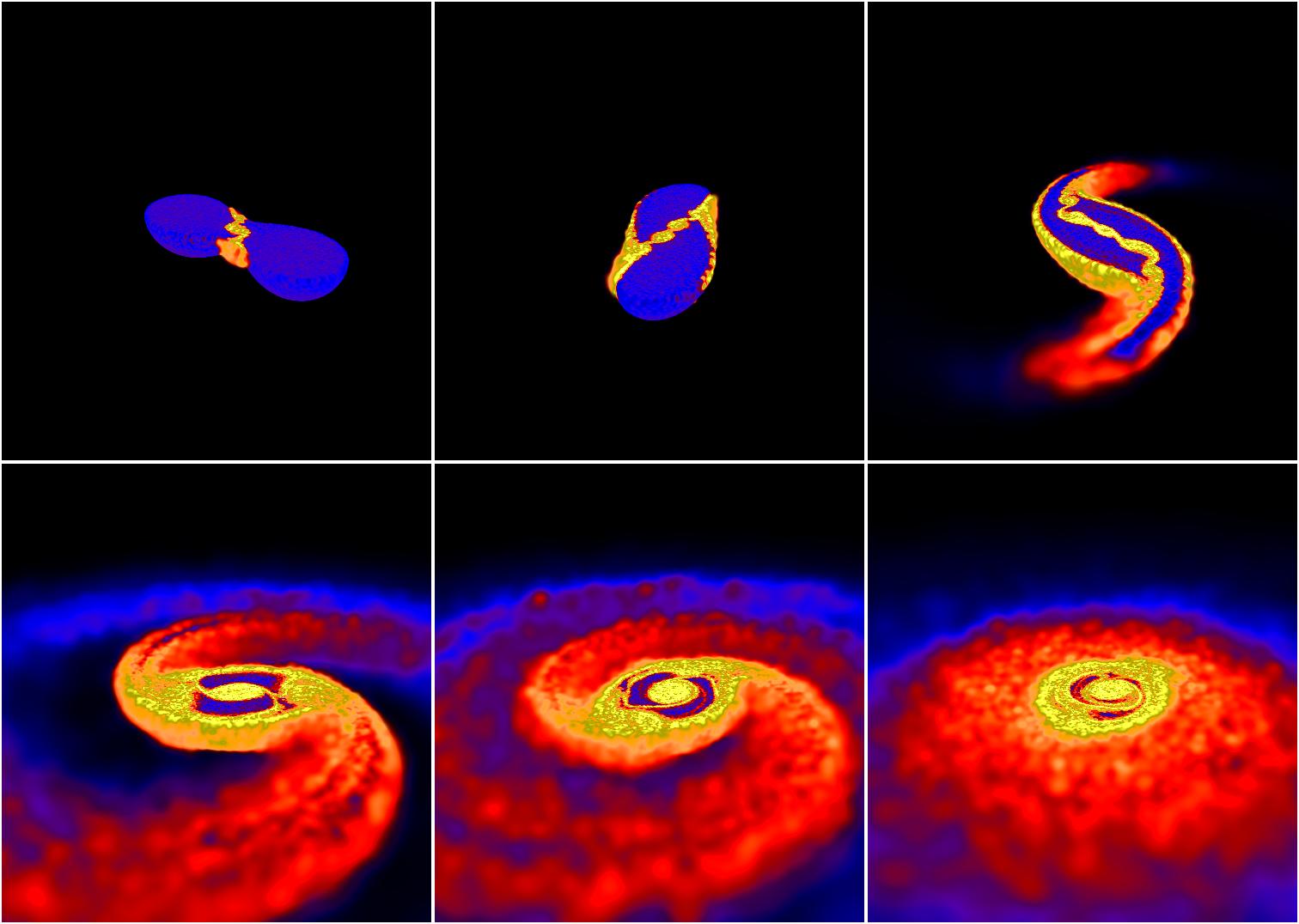
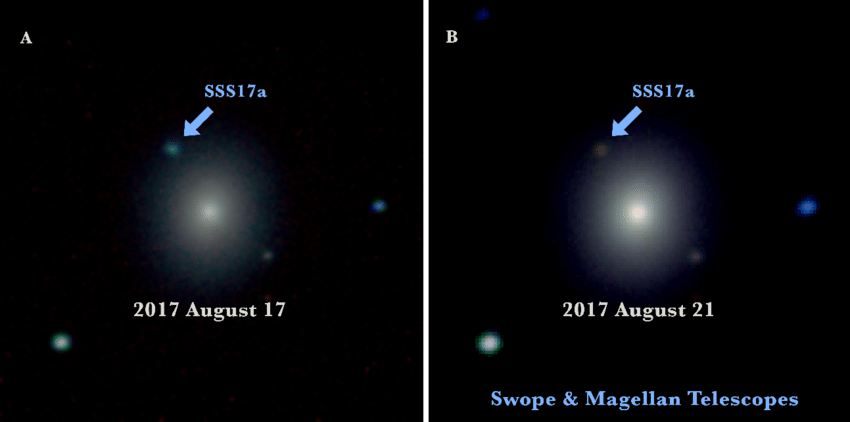
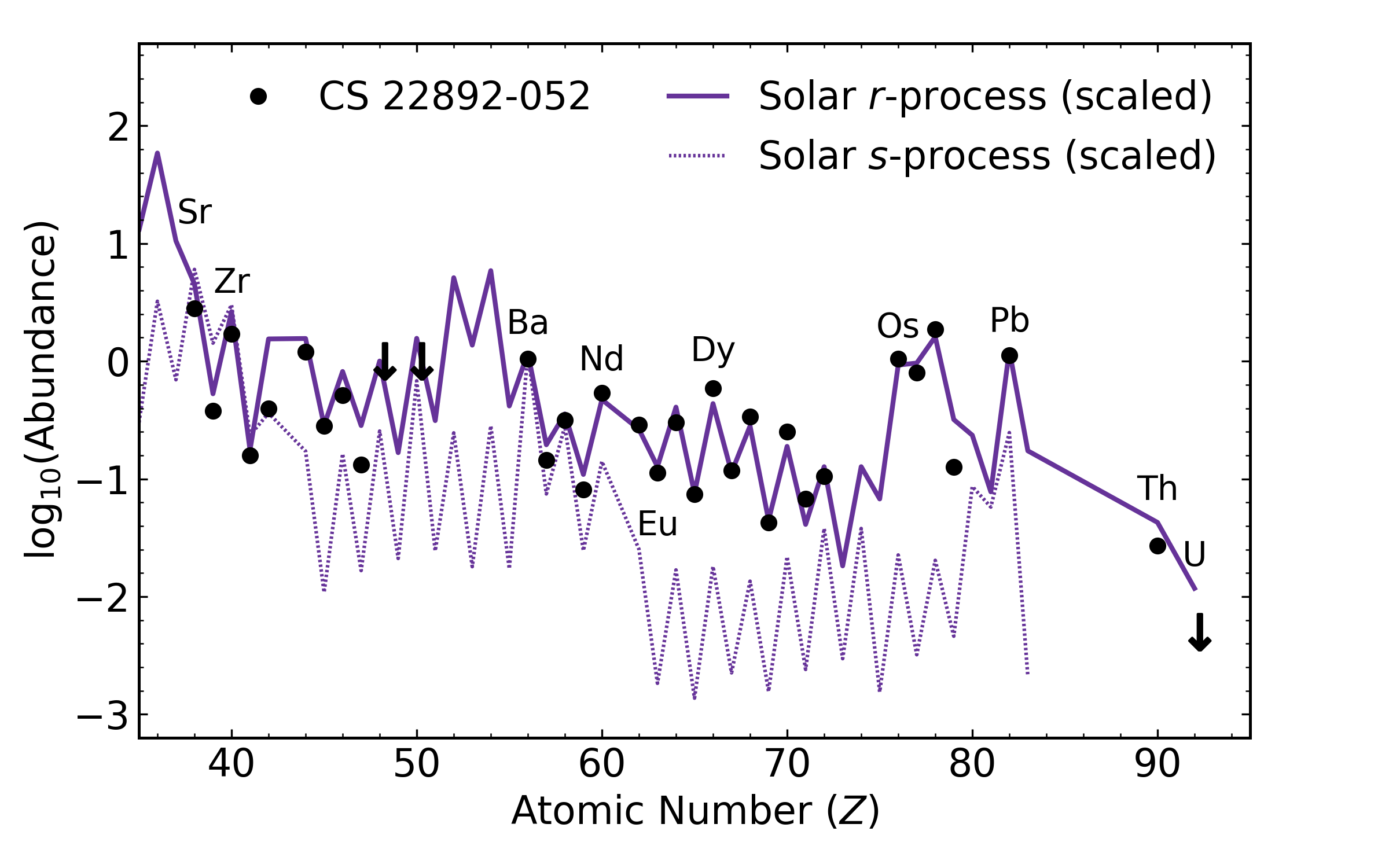
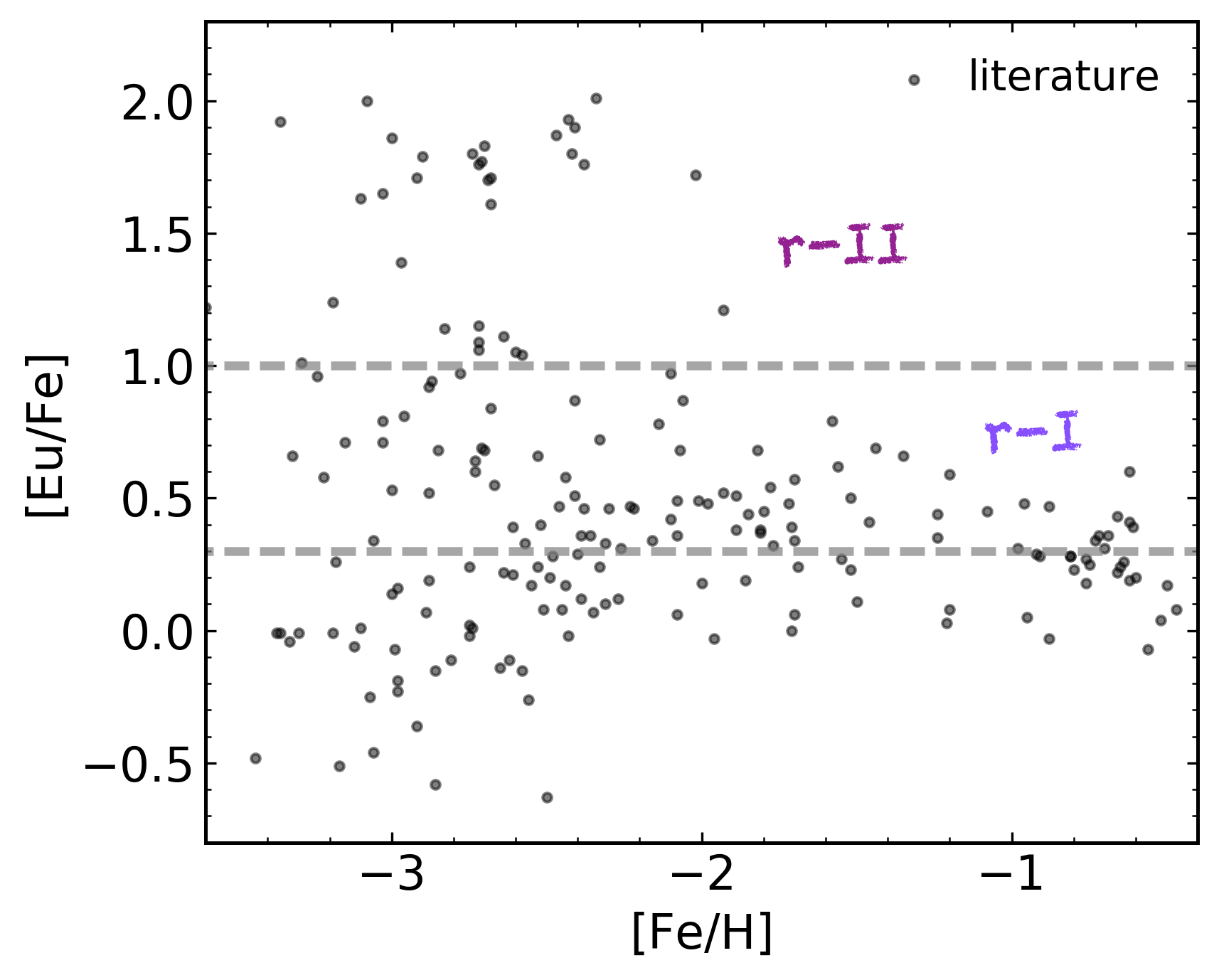
 est. 2017
est. 2017



